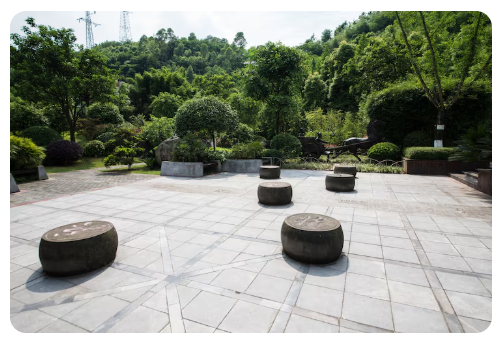A bluestone patio is a classic and elegant addition to any home, offering durability, natural beauty, and a welcoming outdoor space for relaxation and entertainment.
Its rich, earthy tones and unique texture can transform a backyard into a sophisticated retreat. However, a successful bluestone patio installation requires more than just choosing the right stones.
Careful planning and consideration of several key factors are essential to ensure the project is executed flawlessly and stands the test of time. This article outlines the most important aspects to evaluate before you begin your project.
1. Bluestone Type and Origin
Bluestone is not a single type of stone but a term used for various types of flagstone, most notably Pennsylvania Bluestone. These stones are known for their dense composition and beautiful blue-gray color palette.
Consider whether you prefer natural cleft bluestone, which has a rugged, textured surface, or thermal bluestone, which has a smooth, non-slip finish created by a heat treatment.
The origin of the stone is also important, as it can affect its color, density, and price. A high-quality bluestone patio installation starts with selecting the right raw material.
2. Design and Layout
The design of your patio should complement your home’s architecture and landscape. Think about the size and shape of the patio, and how it will be used. Do you need space for a dining table, a fire pit, or a lounge area?
Consider the pattern of the stones; popular options include a random rectangular pattern or a more uniform square design.
The design should also account for drainage and slope to prevent water from pooling. A professional bluestone patio installation will include a detailed design plan that considers all these elements.
3. Preparation of the Sub-base
The longevity of your bluestone patio depends heavily on the quality of the sub-base. The ground must be properly excavated and leveled, followed by the installation of a sturdy layer of gravel and sand.
This sub-base provides a stable foundation, prevents shifting, and ensures proper drainage. Skimping on this crucial step can lead to cracked stones, uneven surfaces, and a costly bluestone patio installation in the future.
4. Choosing the Right Contractor
Selecting a reputable contractor is paramount. Look for a professional with extensive experience in bluestone installations. Ask to see a portfolio of their previous work and check references from past clients.
A good contractor will provide a detailed proposal outlining the scope of work, materials, timeline, and cost. They should also be transparent about their process and be able to answer any questions you have about the bluestone patio installation.
5. Jointing Material
The material used to fill the gaps between the stones, known as jointing, is a key consideration. Options include sand, polymeric sand, or mortar. Polymeric sand is a popular choice as it hardens to prevent weeds and insects while still allowing for some flexibility.
Mortar creates a more permanent, rigid joint but can be prone to cracking over time. Your choice will affect the patio’s appearance and maintenance requirements.
6. Maintenance Requirements
While bluestone is known for its durability, it is not maintenance-free. It’s a good idea to understand the upkeep required. Consider sealing the bluestone to protect it from stains and weather. The type of jointing material you choose will also influence the maintenance.
Regular cleaning will keep the patio looking its best. A professional will provide you with a maintenance plan after the bluestone patio installation is complete.
